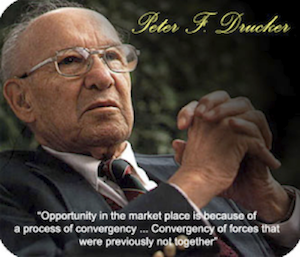 Do you rely more on your mind than physical labor in daily work activities? If so then you can be classified as a knowledge worker and as a knowledge worker you have a level of expectation from your employer as well as they have expectations from you. This expectation has changed dramatically over the last few years thanks largely to the proliferation of social media and other forms of collaboration technologies.
Do you rely more on your mind than physical labor in daily work activities? If so then you can be classified as a knowledge worker and as a knowledge worker you have a level of expectation from your employer as well as they have expectations from you. This expectation has changed dramatically over the last few years thanks largely to the proliferation of social media and other forms of collaboration technologies.
According to Wikipedia: “What differentiates knowledge work from other forms of work is its primary task of ‘non-routine’ problem solving that requires a combination of convergent, divergent, and creative thinking.”
Noted management consultant, author and educator, Peter Drucker defines six factors for knowledge worker productivity (1999):
- Knowledge worker productivity demands that we ask the question: “What is the task?”
- It demands that we impose the responsibility for their productivity on the individual knowledge workers themselves. Knowledge workers have to manage themselves.
- Continuing innovation has to be part of the work, the task and the responsibility of knowledge workers.
- Knowledge work requires continuous learning on the part of the knowledge worker, but equally continuous teaching on the part of the knowledge worker.
- Productivity of the knowledge worker is not — at least not primarily — a matter of the quantity of output. Quality is at least as important.
- Finally, knowledge worker productivity requires that the knowledge worker is both seen and treated as an “asset” rather than a “cost.” It requires that knowledge workers want to work for the organization in preference to all other opportunities.
What I find interesting about Mr. Drucker’s observations back in 1999 is that at the heart of this description he endeavors to give the power of success to the individual knowledge worker, but the technologies of that time period were very restrictive Business Process Management tools that automated structured processes and didn’t give the average knowledge worker the freedom to pursue these ideals.
Today’s Dynamic Case Management tools do however and deliver on the promise of milestone, meta-data and rules based work without having to formalize the entire process, and every permutation of potential scenario, before hand in design or development.

Recent Comments